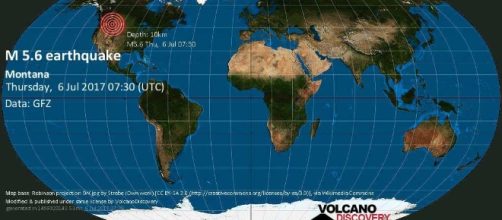On Thursday night around 11.30 pm Pacific Time, the first tremor was felt in the U.S. province of Montana. The U.S. Geological Survey (USGS) reported that the epicenter of the quake was about six miles southeast of Lincoln, a small city in Montana. The seismic activity was caused by the underground fault system, popularly known as the Lewis and Clark line. The line stretches for approximately 250 miles and extends from Idaho to Helena.
The tremors were felt as far as Spokane in Washington, Idaho and Calgary, a cosmopolitan city in Alberta, Canada.
Several aftershocks followed the 5.8 quake in the following hours. Some of them were recorded to be as strong as 4.9 on the Richter Scale.
Losses and Casualties
The intensity of the earthquake woke up the residents in the affected regions as they felt the severe jolts in their sleep. Over 10,000 people have felt the tremors but there were no casualties or injuries reported. However, many people near the epicenter of the quake have reported that the quake was strong enough to shatter the glasses and rattle household items. It also caused a temporary power outage.
A gas leak incident was also reported from Helena, the capital of Montana, which is 34 miles away from the epicenter. As soon as the first tremors were felt, social media was abuzz with experiences shared by the people who felt the earthquake.
Past experiences with Earthquakes
The USGS reported the recent earthquake to be the strongest in the last two decades. Two earlier earthquakes that had crossed the 5.0 threshold mark struck Montana in the last 20 years. A quake of magnitude 5.6 was reported in 2005 and another 5.1 magnitude quake shook the region in 1999.
As per the historical records, the region was worst affected when a 7.2 earthquake struck western Montana in 1959.
This was the largest ever earthquake in the history of Montana that struck a few miles away from the famous Yellowstone National Park. The incident caused huge losses and 28 people died in a huge landslide that stopped the flow of Madison River, thus creating the Hegben Lake.
Yellowstone National Park and the surrounding areas experience frequent tremors as it is situated on the edge of the famous Yellowstone caldera.
But geologists said that Thursday's quake was not related to the ongoing seismic activities in Yellowstone.
For now, since no damage or injuries have been reported in conjunction with the Spokane earthquake, it is being seen by many as an event that had people bonding on social media.


